Bismarckia nobilis
Family: Arecaceae Origin: Madagascar
Said to be named after the first chancellor of the German Empire, Otto von Bismarck, the entire Latin name honors him with “nobilis” meaning ‘noble’ at the end. Otto maintained peace between the German states during his lifetime, creating the first welfare state in history and maintaining loyal support for 30 years during the height of his service. Tough and stately, Otto in himself characterizes many of the things we love about the Bismarck palm today. If you want a palm that gets the job done right in the landscape and you have plenty of room, look no further than the Bismarck Palm.
Arboriculture
Growth Form
Very different from many other palms, the look and shape of this palm is pretty amazing. Stout and wide, in cultivation this palm grows no more than about 12 metres in height, and overall just as wide – maybe wider. A central, leafless and branchless trunk forms with a mound of gigantic round leaf fronds held up and out in a crown that’s round in shape. While the silvery-blue varieties are the most popular and cold tolerant, there are green varieties although not as common.
Trunk
Trunks are stout and wide and shed stems and leaves from the base up to the youngest part of the palm. Trunks will often be fluted at the bottom. They do not self-clean when young but do shed their expired fronds when mature.
Flowering
This palm is dioecious so each plant is either a male or female. Both palms flower of course, with brown, pendent inflorescences. The flowers are pretty unremarkable in both male and female palms, as they are very small and not showy.
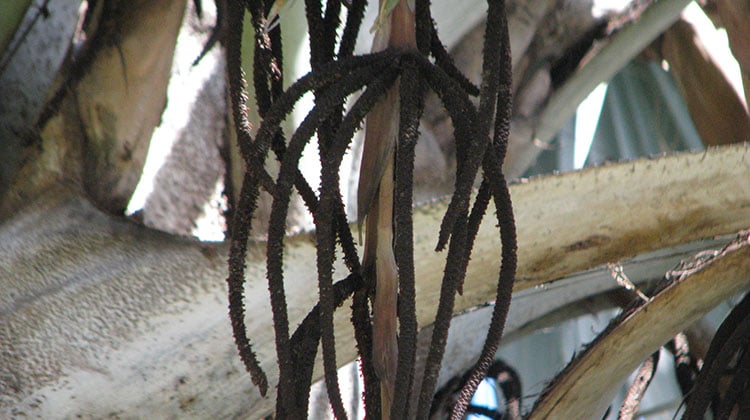 Foliage
Foliage
The most striking feature about this palm is its foliage. In mature palms, each leaf can be over 3 metres across, and is rounded in overall shape. Each leaf sports 20 or more hard and stiff blades that are split on the ends. The sides of each frond are so sharp they can cut skin though they don’t have spikes.
Fruits
Only the females of this palm set fruit. From each flower they develop a single stone fruit that is green when new and turns to brown as it dries. It’s not really an edible fruit, for either people or animals. Thankfully it’s not a messy landscape fruit either.
Management
Propagation
Bismarckia is easily started from fresh seed, like many other palms. Removing the fruit flesh from the outside of each seed and planting deep in well prepared soil and kept warm and moist is a typical method of propagation.
Cultivation
The Bismarck Palm is a tough customer and can be grown just about anywhere that gives it plenty of room and space to spread out. It requires full sun exposure but can be grown in soil that is moister and less well draining than other palms, although it does well in most all soil types, even dry ones.
They thrive in tropical and subtropical climates, and can withstand some amount of freezing in protected temperate areas. The plants that have the white/blue cast can withstand colder temperatures than the green plants typically, which makes these the more popular choice in landscapes.
David’s Field Notes
The primary problem I see with Bismarckias is being planted too close to houses, driveways, fences or anything else. They have a huge spread which is easy to underestimate. They can’t be neatly pruned so the palm becomes redundant, requiring removal. This is just one occasion when a plan of a property that includes trees is helpful.
They can be used as specimen plants, anchoring trees, windbreaks, and screens. They are a wonderful staple in the landscape. On the other hand they are very often planted too close to houses and other structures. Generous allowance needs to be made for their huge spread.

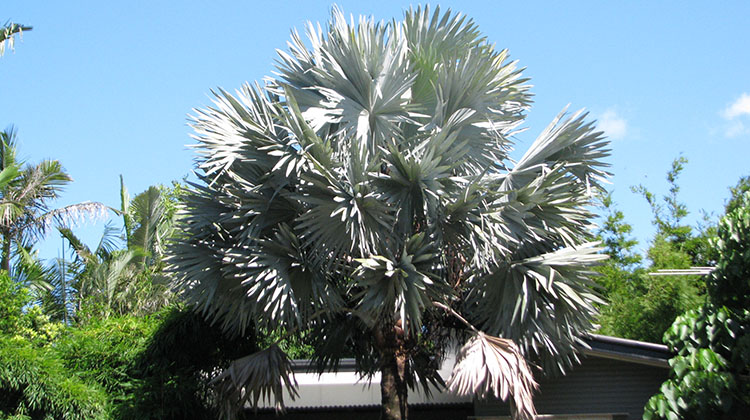
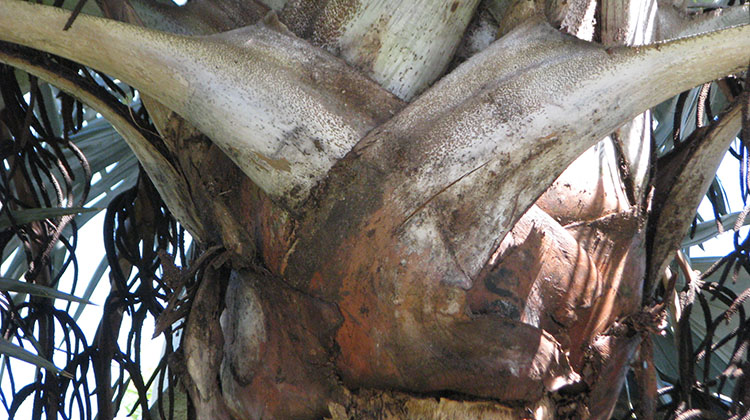
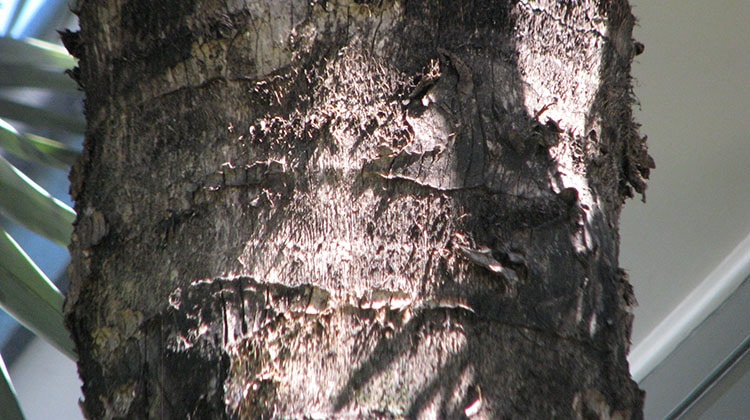
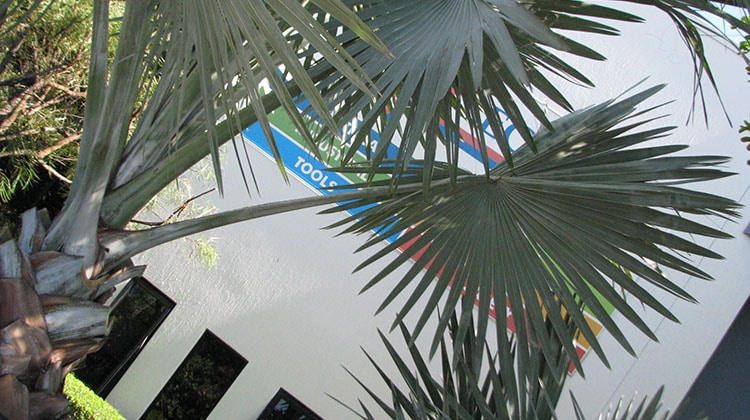
Hi,
I have 2 bizmark palm trees, about 5-6 meter high. If you’d like a photo or have a question please call 0400288228
Mature Bismarck Palm (Bismarckia nobilis)
For sale Camira QLD – mature Bismarck palm approximately 3m tall. Photos available.
Open to reasonable offers – buyer responsible for palm removal, hole fill and transport.
Please text me on 0416 371 879 if you are interested in the plant as this message section does NOT send notifications to message posters about any replies sent!
Thanks,
Amanda
Hi All,
We have a large bismarck palm on our acreage which we love – however it is quite close to our septic tank. We’re also putting in a fibreglass pool…. which will be within a few metres of the existing palm site. Is it advisable to try to move or should it be ok to leave? We don’t want to lose it and are concerned if we transplant it will die…. but not sure if it will damage pool! Too much to think of at the moment haha
Hi there,
Just wondering if anyone who has transported a Bismarckia before would know roughly how much one would weigh being approx 5 meters tall, including the palm leaves.
The trunk appears to be only approx 1 meter high.
Thank you
Hello everyone, I have a 6 meters, healthy, Silver Bismarck Palm to be removed before replacing the back fence. There is easy access to the rear of the property, so if anyone wants to purchase, please make an offer. You will need to arrange the removal and transport. Photo is available to anyone interested. You can message me on 0499216607. Location: Redbank Plains, Ipswich. Thank you
Hi Glen is this still available ? Do u have any photos?
Hello everyone, I have a 6 meters tall, healthy Silver Bismarck Palm to be removed before replacing the back fence. There is easy access to the rear of the property, so if anyone wants to purchase, please make an offer. You will need to arrange the removal and transport. Photo is available to anyone interested. You can message me on 0499216607. Location: Redbank Plains, Ipswich
Hi All
Based in Camira QLD – have a Bismarck about 2.5 – 3m tall.
If you are interested in acquiring it we’re open to offers – buyer to extract the plant, fill the hole and transport it away.
Photo available with my 6foot husband next to it for scale.
Please text me on 0416 371 879 if you are interested in the plant – first in, best dressed.
Thanks,
Amanda
Hi.
I am searching for one or two 1 metre tall Bismarck palm to be planted in area with plenty of space on an acreage property in Dakabin in the Moreton Bay region. Would any of the forum participants be able to assist me with information regarding options to remove from a property or purchase? Any assistance would be greatly appreciated.
I have a gorgeous 6m Bismarck Palm available for purchase if anyone is interested. I am located in Graceville. Please text me on 0433178400 if you would like to see photos.
I have a 3-4m Bismarck that needs to be removed in Jimboomba. Previous owners planted next to the pool. Very healthy plant. If anyone is interested please message me. Make an offer
Hi Donna!
Interested in this! Is it still available?
Hello Donna,
I am probably way too late but is the Bismarck palm still available? I live in Mundoolun.
Hi,
Have a large (maybe 3-4m) Bismark palm available for relocation.
Located in Chinchilla, Qld.
Send me a message if interested.
Ph: 0422184027
Hi,
I have a large Bismarck in one of my gardens that I would like to remove if anyone is interested in making an offer. Photos are available.
Contrary to popular belief, Bismarck palms can be transplanted successfully. They need to have the root ball dug out, ALL fronds removed and then transplanted as quickly as possible, preferably the same day. New location should be as deep as the root ball and twice as wide. When placing in new location, add some rooting hormone and fertiliser in the hole and then keep the root ball well watered for the first six months. Moving them at the warmest time of year is recommended for best results. They should have a number of new fronds sprouting after four to six months.
Naturally, all removal costs would be that of the buyer.
Location: Tanah Merah QLD
My Bismarck palm ,which by the way I love, keeps dropping seeds so if anyone wants some I am happy to give them away. However you must know I have planted quite a few and very few have taken. One that did took over a year to grow and by two years old is still only less than a metre high. Must say I don’t give them a lot of attention though. They are tough! I use the stems in my garden for paths and the leaves for mulch. Need a good strong mulcher.
Hi Sue,
I would love to get some seeds off you. I will take as many as you have got. Let me know the best way to get in touch with you directly. Thanks, Grant.
Hey Sue. Interested in some Bismarkia palm seeds if you still have to give away. We are in Brisbane, where are you . Regards Val.
Hi!
I have the bismarck seed in Africa,Cameroon at greater quantity.
Where are you located for seeds please
Hi just ben wondering do you still have same seeds. Cheers Feliks
Hello Sue
I am in Bellbowrie and would adore seeds when available.
Bella 0412876133
Hi Sue
would love some seeds if you are still able to give them away… I am in Tweed region. thanks
KAY
We have one in Brisbane that was planted in 2003. This year is the first time it has flowered. Is this normal?
Hi All
Based in Camira QLD – have a Bismarck about 2.5m tall and in the process of sending up new fronds so will be even higher soon.
If you are interested in acquiring it we’re open to offers – buyer to extract the plant, fill the hole and transport it away.
Photo available with my 6foot husband next to it for scale.
Please text me on 0416 371 879 if you are interested in the plant – first in, best dressed.
Thanks,
Amanda
Hi
How much are you selling for?
Thanks
Ally
Just so you know, These palms cannot be transplanted very well once the root has taken, they will usually die if replanted.Transplanting Bismark palms (Bismarkia nobilis) is notoriously difficult if the root is damaged at all it in the slightest it will die.
Hi Guys!
Im located in Cronulla, NSW. Im looking for 4 large bismark palms, happy to pay for collection and transport.
Hi we have a large Bismarck Palm in the Inner West of Sydney we are looking to remove if you are still looking.
Do you still have this?
Hi,
We are demolishing our home and have a beautiful healthy Bismarck Palm approx 10metres tall if anyone is keen to purchase? Happy to send through photos :)..
Thank you.
Hi Karyn,
I am looking for a Bismark Palm. I would love to see photos, also where about are you located ?
Kindest,
Hayley 0415901155
Hi,
I am Interested in your palm . Where are you located ?
Hi Karyn, is your bismarck still available? Thanks
Hi all,
I have a Bismark bigger than our two story house. It’s in great condition. Would be a great attraction for a property or new estate. Happy to send photos. Located on Sunshine Coast.
Anyone interested in a purchase?
Thanks
Paul
I have a bismarck palm 12 years old and two storey. It is so majestic but is outgrowing my small garden. Does anyone want it – I live on Gold Coast.
Hi Monique,
Where abouts in the Gold Coast are you?
Thanks,
Becca
Hey Monique is the palm till avalisble
Is your palm seeding yet
Hello (29 April 2020)
I am looking for a 2m Bismarck Palm to pot into a 1200 wide x 900 high pot as a feature for my front garden. Any availability welcome, delivery to the Gold Coast.
Thanks
I have a 2 year old Bismarckia that the truck is rocking from the day I bought it. They suggest me to put some roots hormone a few weeks ago
It seems that the plant never settle
Anyone can give some advise?
We have a huge (taller than our 2 story house) Bismarck right next to our pool. Are the roots likely to be a risk to the pool? If we have to remove it, can it be relocated?
Where is the best place to buy seeds in Brisbane?
Hi. Is there anyone wishing to purchase a Silver Bismarck Palm tree about 5 metres high? It is a healthy specimen now too big for my front yard. Will need to arrange for removal. I can send a photo.
Location: Indooroopilly
Hi our neighbour has a huge Bismarck tree currently fruiting we constantly get a smelly odour at that area. Could it be his tree, only smells bad in summer time.
Hi George, and thanks for asking. It could be his tree, but if it is it will be because of a pathogen. In a bismarck palm I’d suggest a fungal pathogen called Phytophthera is the most likely cause. If anything could be damaged from the tree failing (breaking above the root system, in this case) then it should be assessed by a level 5 arborist. Let me know if I can help, if you’re in Brisbane.
Can I please harvest seeds
I have a 2 story high Bismark in great condition. Can supply a photo. Anyone looking to purchase?
Where are you based??
Hi Tristan. We’re in Brisbane with a yard at Archerfield and at Goodna. We service much of south Brisbane and north to around Clayfield.
Hi Paul,
I’m replying a few months later. Do you still have your Bismark available?
Hi Emily,
We have a large Bismark, approx 8 meters tall and trunk at base 1 meter diameter. Are you still looking?
We have a Bismarck that is approximately 12 years old. It is planted very close to driveway & house (currently the trunk is approx 7 foot away). Should we look at having it removed?
Hi Shell. If your house is built on a slab then, sorry, but yes. The palm roots will be growing against the slab and growing along your house giving access to termites. If they are under the slab then during drought the roots will contract causing soil subsidence. We protect trees when we can but in this case I recommend removal.
What a load of crap!
I live in Broken Hill and planted a Bismarck Palm approx 2 years ago. While it looks healthy and I’d growing well and constantly throwing new fronds, the trunk does not have any strength and had to be staked and tide otherwise it falls over. Can you suggest the possible reasons for this and how the problem may be resolved, regards Brenton
Hi Brenton. I suggest tapping the trunk with a rubber mallet. If it sounds solid then your problem is likely to be nutritional – fertilise it and surround it with mulch to reduce competition from lawn, if present. If it doesn’t sound solid then it’s likely to be a fungal infection which will be fatal for the palm (Phytophthera cinnamomi)
Hi i have 2 of these huge palm trees at my home in south west Brisbane and i must say as Nice as they look you need to either be a full time gardener or allow a budget of around $50 a month to maintain them. They shed these huge branches constantly that are next to impossible to cut up and dispose of. Having recently purchased the house without this knowledge im now trying to decide what to do with them as i can afford the time or money to maintain. My question can they be sold and relocated? Or will they ever stop dropping their branches or is this constant and all year round. Thanks.
What is the life span of a Bismark
Hi,
I have a beautiful in-ground bismarck palm available for removal and relocation! Please get in touch if you’d like to see a photo and are interested in this great opportunity.
Location: The Gap, QLD
Hi Skye,
Is your Bismark still available? keen!
Hi, I have two brilliant Bismark in my front garden that I planted about 3 years ago when they were about two feet high and are now at second storey level on my house. They are amazing. My questions is, do you prune off the bottom fronds., they don’t shed them much and we have been taking off the dead ones, so I have very frondy trees that you cant mow under. Hope you can assist. Ruth
At maturity do these palms keep losing their fronds?
Mine is well above 12 metres high.
Thanks